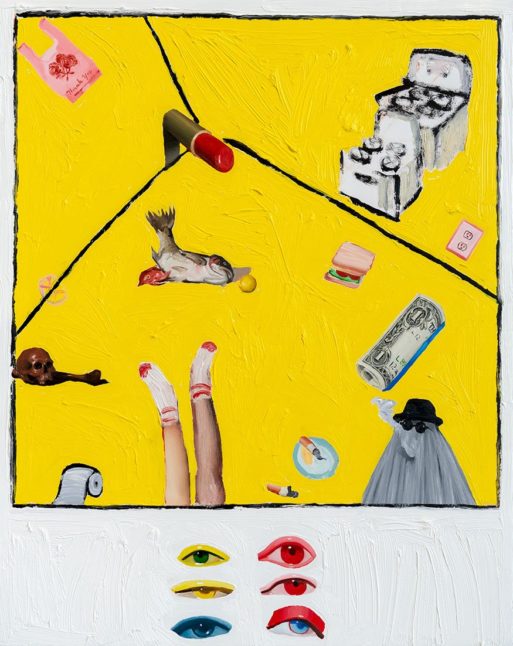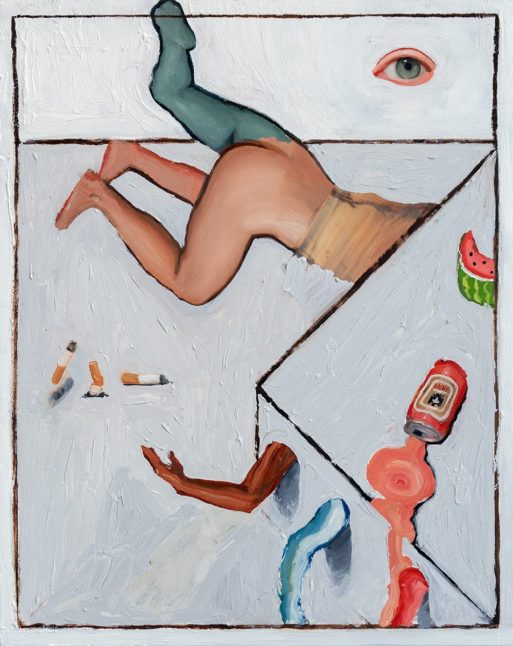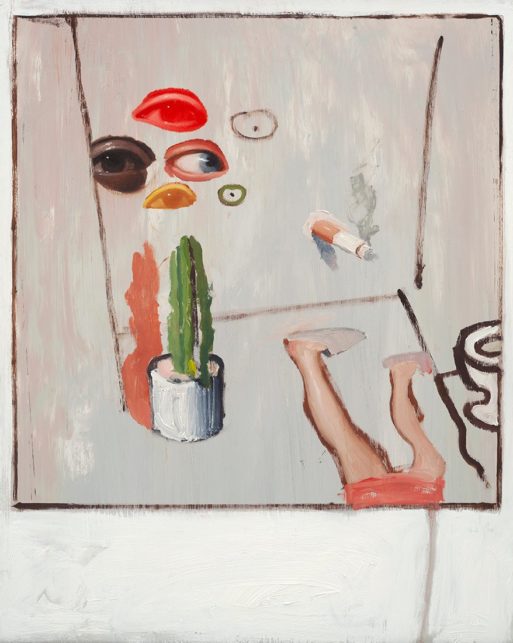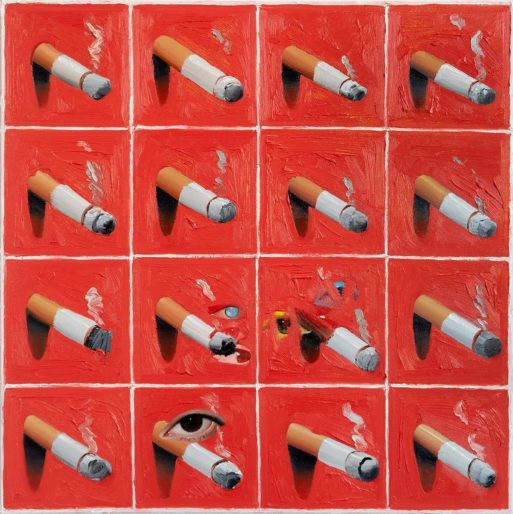
Credit: moderneden.com
Emilio Villalba, a San Francisco-based artist best known for portraits featuring distorted facial features on thickly painted backgrounds, took a bold new direction for his series titled “Symbols of Death, Signs of Life.” The paintings, shown at San Francisco’s Modern Eden Gallery (the gallery represents Villalba and sells his paintings and prints), are a kind of a cross between interior landscape, still-life, and collage.

Credit: moderneden.com
Painted on mostly white backgrounds, the paintings feature images of objects from the artist’s daily life, along with images evoking Dutch symbolism; images of dead technology; plenty of cigarettes; and the human eye, which has always been a present theme in Villalba’s paintings, giving a sense that the artist’s entire life is under scrutiny or observation.

Credit: moderneden.com
The paintings often include stark black lines reminiscent of apartment walls and corners, and many of the paintings include blocks of white at the bottoms that evoke Polaroid pictures. Often we see the lower half of human anatomy, stretched out on the floor like a person who may be dead. The images of seemingly dead technology, represented along with the images of people who may be dead, often beg the question, “which are symbols of death and which are signs of life?”

Credit: moderneden.com
Each of the paintings holds a narrative we’re forced to uncover with a close study of the objects it contains. Even when the objects are 25 burning cigarettes, the painting tells a story about time and how cigarettes mark the passing of time for the artist.
While these works do represent a new direction for Emilio Villalba, much of his style remains the same. Villalba’s paintings are still striking in composition, and the strength and texture of his brushwork give these pieces a familiar tone. Complete with new imagery and a new perspective, these works are still portraits that look outward rather than in.

 Emilio Villalba’s “Symbols of Death, Signs of Life”
Emilio Villalba’s “Symbols of Death, Signs of Life”


 “Summons” by Aurora Levins Morales
“Summons” by Aurora Levins Morales

 AMA Adopts New Policies Expanding Access to Palliative Care
AMA Adopts New Policies Expanding Access to Palliative Care














